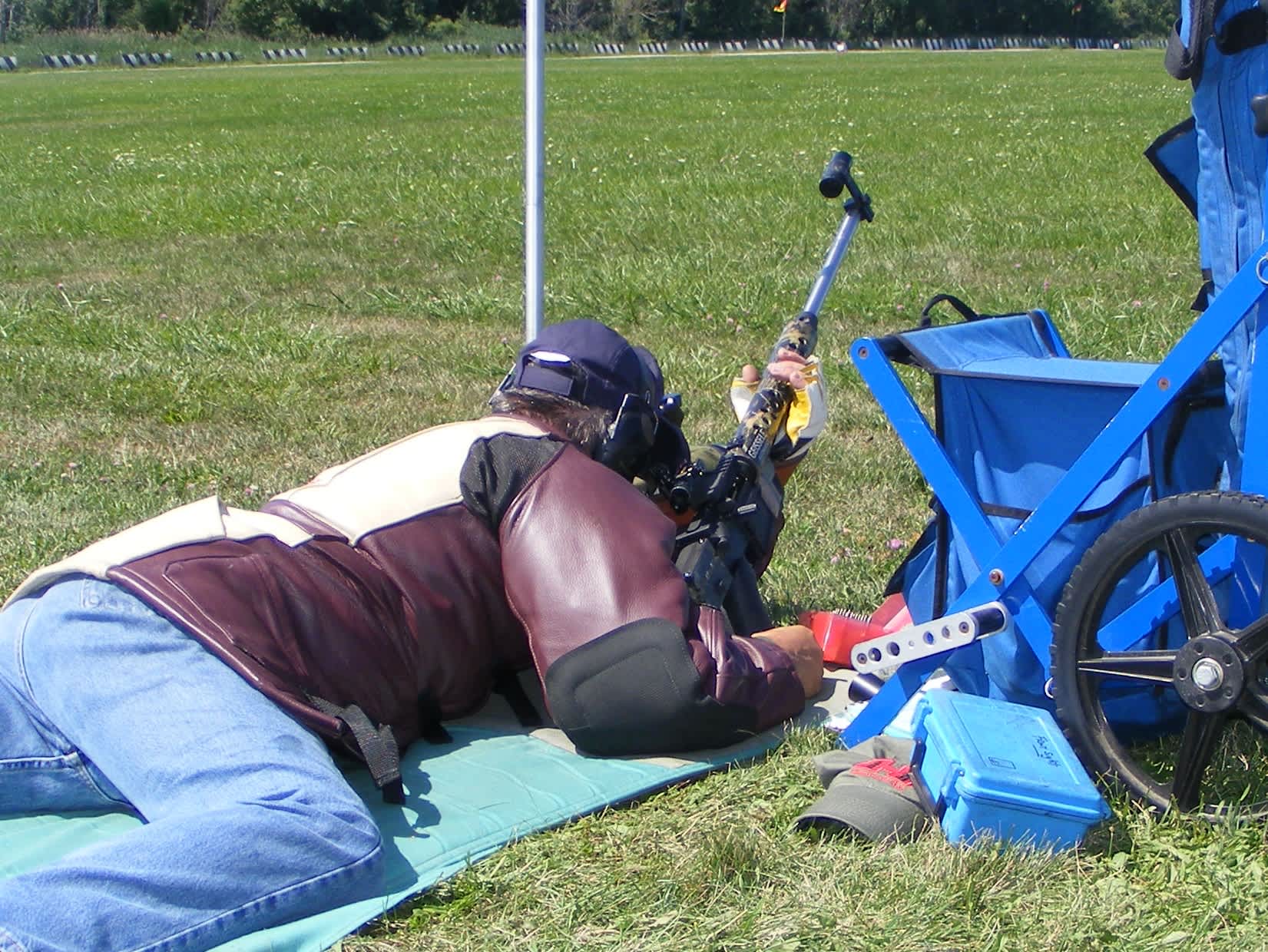Shooting the NRA High Power Rifle Championships: The Finale and Lessons Learned
Lewis Creek Shooting School 08.13.12

In the book Zen and the Art of Motorcycle Maintenance, it was referred to as “the big mistake”: the mistake that you can make that will cost you dearly, like over-tightening a bolt and stripping the threads in the motor case or breaking the bolt off in the hole. I knew that going to shoot the National High Power Championships with just a few weeks of “practice” not done at full course distances held potential for “the big mistake” and I was right.
My week at Camp Perry, Ohio for the National High Power Rifle Championships was still fun and truly, I did meet with some success in some of the individual matches. Over the four days, my offhand scores with the tiny Colt Competition Rifle improved by one point each day. The light weight of the rifle was a handicap in all positions, but offhand with a seven pound 3-gun rifle was hardest. The characteristics that make a 3-gun rifle fast in transitioning from one target to another make it really tough to hold in a six inch ten ring at 200 yards, standing.
My sitting scores were all fairly good with about a 95 average, prone a little less but not much. In rapid fire, the Colt’s trigger was easy to manage and, compared to the M14/M1As I used to shoot, recoil was delightfully light. Due to NRA rules, I had to remove the excellent compensator and replace it with a conventional AR flash suppressor. I was surprised that this changed the 200 yard zero, requiring me to go two minutes to the right.
Slow fire prone is fired at 600 yards and, with the Colt’s 18” barrel, probably a little beyond the comfort level of a 3-gun rifle. The light weight increased my pulse movement to a little larger than the six inch X ring on the NRA medium range 600 yard target. I found I needed 15 minutes of elevation from the 200 yard zero to get in the ten ring. At 600 yards, this equates to seven and a half feet. It was harder to get good scores at 600 yards than the shorter yard lines because it requires more precise shooting due to the size of the ten ring and the fact that an 18” barrel doesn’t drive the bullet nearly as fast as a 20” service rifle barrel, much less a 24 or 26” match rifle barrel. I increased my windage adjustments by about 20% to make up for the loss of velocity and this seemed about right.
The biggest loss in points and “the big mistake” came from my failure to properly run my gear. My friend, Chris Cerino of Chris Cerino Training Group, constantly talks about the value of being able to properly run your gear. Chris says, and he’s correct, that running your gear is as important as marksmanship in many applications. My failures came in lack of repetition in operating windage adjustments on the scope. Sixteen years of turning a windage knob to the right for right movement bit me in the butt.
I was dealing with wind changes, focusing on holding center with a very light rifle, and dealing with a scope that moved left when the knob is turned right. This created a perfect storm that caused me to shoot a right side seven, move even further right, and shoot a right side five. In retrospect, I should have either trained for making those adjustments or used favors or Kentucky windage to compensate. The problem affected me in two of the three strings of 600 yard slow fire. As usual, Chris was right.
Shooting a 3-gun rifle in this kind of match was a trial-by-fire for this rifle. Not only were the range distances and level of precision beyond what the gun was designed for, the conditions were tough as well. The last two days of the championship, the rifle, and everything else for that matter, suffered being exposed to hard rain during my relays. The Colt Competition Rifle and Bushnell Tactical Elite scope performed flawlessly, as did the Black Hills 77 grain OTB ammunition. Had I been as well honed as my equipment, I would have done a lot better.
I was in second place, Master at the end of the first day and by the end of the Championship, I slid to fourth Master. Not a bad showing for a 60 plus washed up old service rifleman shooting an 18”-barreled, seven-pound carbine in a field of 14 pound 26”-barreled match rifles with practiced-up operators. Had I run my gear better, I feel certain I could have finished at least second master and maybe won.
As for the experience, any shooter should have a week at Camp Perry on their bucket list of things to do. The people are wonderful, the matches are impeccably run, and it’s simply something everyone who loves shooting should do. I will be shooting again next year if at all possible and I plan to be better prepared.

